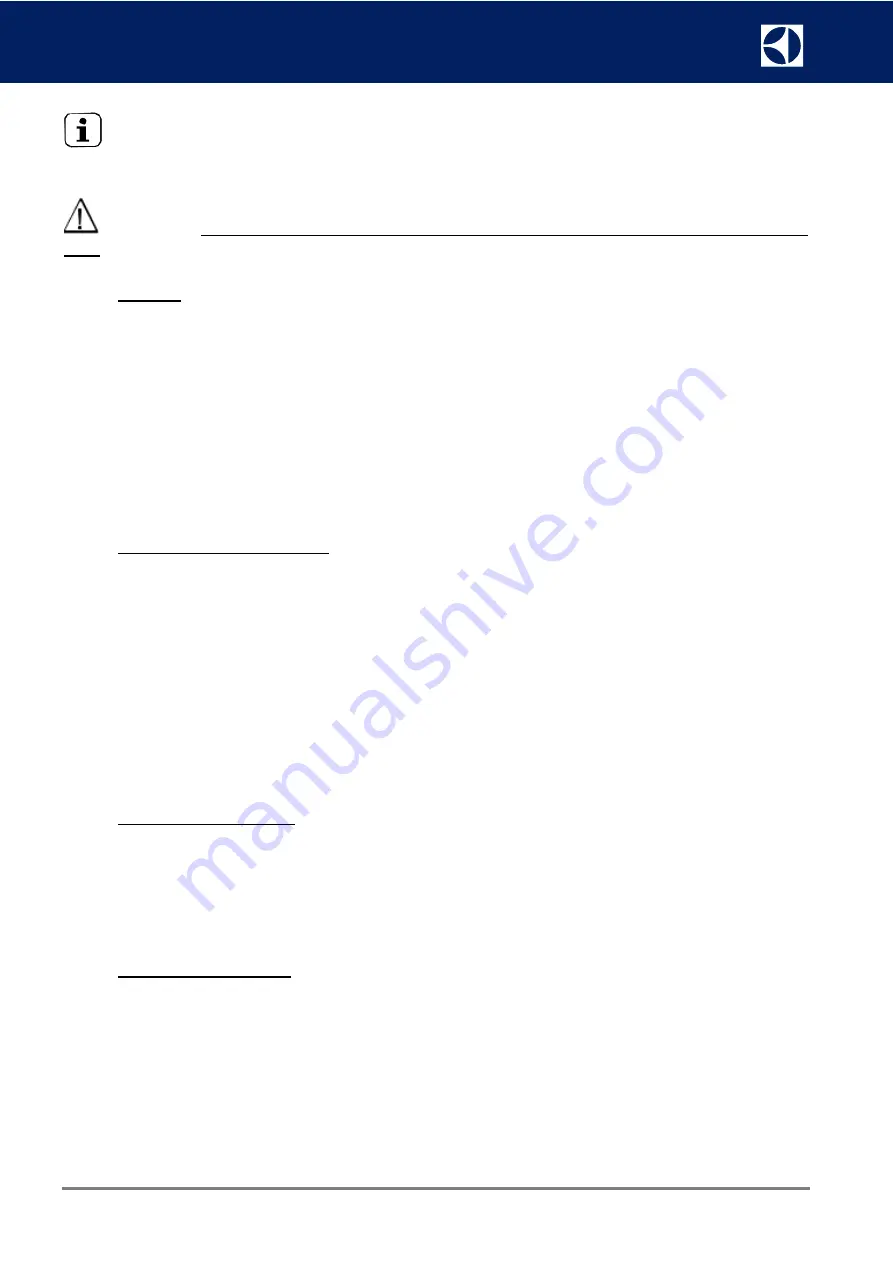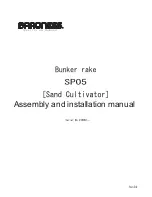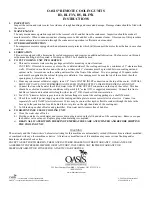
DOC
NUMBER
595R495
23
SERVICE MANUAL Blast Chiller Freezer 100 - 200
2.6.4 Installation Steps
INFORMATION:
Select and size the equipment needed to assemble the refrigeration system according to the project specifications
(pipes, valves, accessories, condensing unit). Carefully observe the scope for each model.
IMPORTANT:
Size pipe/hose based on the condensing unit dimensions (do not size based on the evapo-
rator).
A. Phases
1. Weld the pipes to the condensing unit and evaporator connections. Check the seal (leak test) in
all soldered or threaded connections.
2. Obtain the vacuum in the circuit (check with the pressure gauge if the vacuum is stable).
3. Fill the required refrigerant mass (kg): the gas should preferably be charged in the liquid phase.
4. To ascertain the correct behavior of the system, switch ON and monitor:
a.
Low/high pressures
b.
Liquid/gas lines suction temperatures
5. If detecting low performance or excessive pressures, fine tune the set up by either filling more
refrigerant or discharging it until reaching the correct pressures/temperatures (see below addi-
tional general notes for more details).
B. Refrigerant mass set up:
•
Taking into account both the temperature set on the BCF chamber and the temperature where the remote
condenser is installed, when the liquid/gas lines suction temperature gets closer to the design values, proceed
with the final adjustments (phase 5 mentioned above).
•
The superheating at the evaporator (given by the difference between temperatures at the piping surface at
the point where the expansion valve's bulb is fixed, and the evaporation temperature
(*)
) shall be between
5°C and 10°C (9°F and 18°F). Superheating at the compressor’s inlet must be between 10°C and 15°C
(18°F and 27°F), where in such case it is the difference between the temperature at the surface of the return
pipe, at a distance 150 mm (6") from the compressor, and the evaporation temperature. The sub-cooling in
the condenser shall be between 3°C and 10°C (5°F and 18°F), i.e., the condensing temperature less than
the temperature at the pipe's surface at the condenser's outlet.
(*) Evaporation temperature obtained by converting the suction pressure into temperature.
C. Cleaning the System
(in case condensing unit replacement):
•
Cleaning the system before installing a new condensing unit is mandatory to completely remove residues and
other contaminants.
•
The manufacturer recommends the installation of a filter-dryer at the suction line during the cleaning operation
to retain and filter any undesired particles
•
It is recommended to make the joints by braze-welding
D. Welding operations:
•
While welding keep nitrogen (N2) circulating into the pipes with a pressure between 1 and 2 psig (equivalent
to 1.08 - 1.15 bar): this will prevent oxidations and scale forming, hence ensuring that the piping is free from
any contaminants (oil, grease, oxides).
•
Use a damp cloth when welding valves or fittings or pipes to prevent the components overheatingbecause of
the heat propagation.
•
The compressor and the filter- dryer are extremely susceptible to humidity. As such, they shall only be opened
during installation or replacement phases. In case of opening, do not leave them exposed to air for more than
10 min.
















































